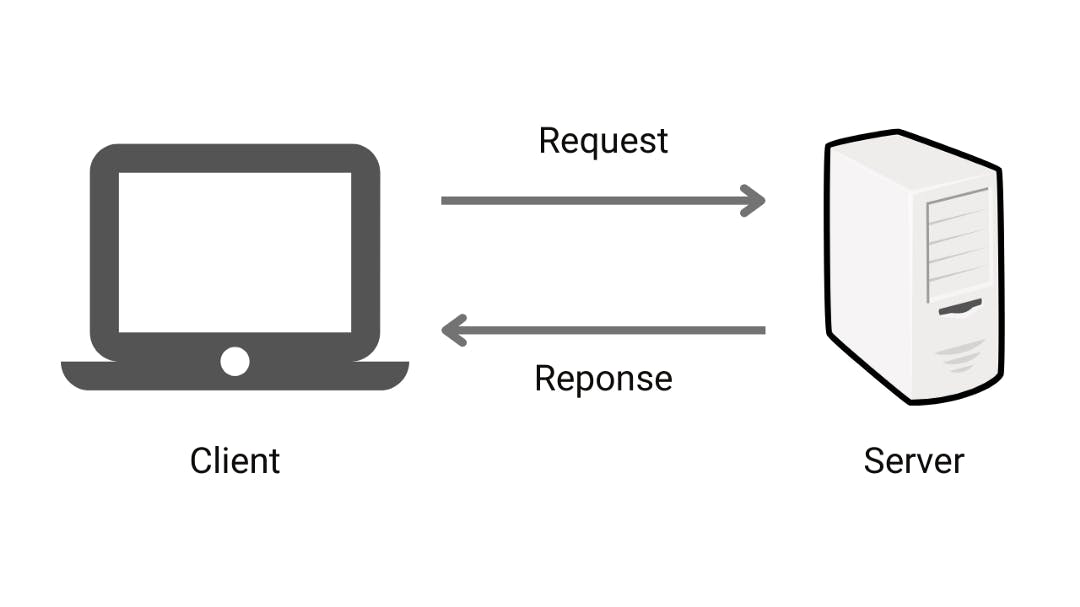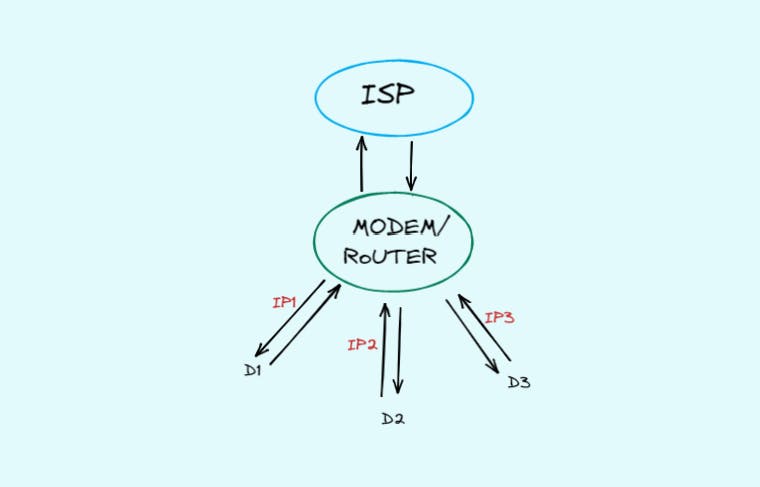Computer Networks🖥
Basically People Think Networking Happens Via Satellite🛰 But It is UNDER OCEAN🌊.

Photo by Taylor Vick on Unsplash
Table of contents
Here, In this blog I am going to provide Standard Knowledge about Computer Networks
Why Computer Networks?
In my perspective computer networks is one of the fundamental concept to know for all who are using the Internet(Especially for Tech Flocks),Now comes the question what is Internet?
Internet
Entire connection on a global scale provides a variety of information, Communication facilities and collection of computer networks using standardized communication protocols.
How did it start?
History
please go through this Link you will find an interesting story behind how the internet started.
after knowing the history of the internet let us look into how dose 1st worlds website looks - Click Here This is how it use to look, I think it has been made with simple HTML, if you observe properly there is no search engine. The first Search engine is Launched by Yahoo!! as per my knowledge as we were discussing the internet, website, and search engine now let's get into how the webserver works, let us start with Client-server architecture.
Client Server Architecture
 Basically, what happens in Client Server Architecture, A User like Us wants to Search for something in Google okay? Here User is a Client, He/She will Request for World's first website In Google Server, Then Google will respond with a page that contains information about world's first website. This is how Client Server Architecture works.
Basically, what happens in Client Server Architecture, A User like Us wants to Search for something in Google okay? Here User is a Client, He/She will Request for World's first website In Google Server, Then Google will respond with a page that contains information about world's first website. This is how Client Server Architecture works.
Protocols
These are the rules on how to pass the network between the computer or buildings
Types of protocols
- TCP - Transmission Control Protocol
- UDP - User Datagram Protocol
- HTTP - Hyper Text Transfer Protocol will explain in detail about this in the next blog TCP/IP Model.
ISP Model -Internet Service Provider
 In the above diagram, you can see how the internet service provider works.
--In this the Internet service provider(Airtel) then is going to connect with modem or router(that will be present in the home for the connection of WIFI) the devices we use are connected to router or modem
The connection between ISP and modem did via Global IP address from modem to devices Local IP address will be present (IP1, IP2 & IP3) as you can see in the diagram.
Modem and router decides that which device as request it does use NAT(network access translator) and now you will be getting a doubt that how the information move to an application like WhatsApp or some other application right, it will take the help of port numbers to pass the information device to the application
In the above diagram, you can see how the internet service provider works.
--In this the Internet service provider(Airtel) then is going to connect with modem or router(that will be present in the home for the connection of WIFI) the devices we use are connected to router or modem
The connection between ISP and modem did via Global IP address from modem to devices Local IP address will be present (IP1, IP2 & IP3) as you can see in the diagram.
Modem and router decides that which device as request it does use NAT(network access translator) and now you will be getting a doubt that how the information move to an application like WhatsApp or some other application right, it will take the help of port numbers to pass the information device to the application
Port Number
A port number is a 16-bit unsigned integer, thus ranging from 0 to 65535. For TCP, port number 0 is reserved and cannot be used, while for UDP, the source port is optional and a value of zero means no port. Like web pages use HTTP, the port number of HTTP is 80 & O-1023 port numbers are reserved. 1024-49152 port numbers are reserved for applications, The left-up port numbers we can use. For Some basic knowledge 1Mbps - Megabits per sec - 1000000bits 1Gbps - Gigabits per sec - 1000000000bits 1Kbps - Kilo bits per sec - 1000bits
How does Communication happen between two computers?
There are two ways:
- Guided way: Computer Connected with wire
- Unguided way: Wifi, Bluetooth
Networks
- LAN
- MAN
- WAN
 Let us discuss these three in detail
Let us discuss these three in detail
LAN: LAN stands for local area network. A network is a group of two or more connected computers, and a LAN is a network contained within a small geographic area, usually within the same building. Home WiFi networks and small business networks are common examples of LANs.
MAN: Stands for "Metropolitan Area Network." A MAN is a network that spans a large area, such as a town or city. It is larger than a campus area network (CAN), but smaller than a wide area network (WAN). An example of a MAN is a series of wireless routers distributed across a city.
WAN: A WAN is a computer network that uses various links-private lines, Multiprotocol Label Switching ( MPLS ), virtual private networks ( VPNs ), wireless ( cellular ), and the Internet-to connect smaller campus and metropolitan area networks in diverse locations into a single, distributed network covering a large geographical. 1.SoNET - Synchronous optical Networking
- Frame relay - It is basically a wave for the local area network to the widened area.
Router AND Modem-
- Router: It transmits digital to analog Signals
- Modem: Routers are the data packets based on the IP address
Topologies
Network topology is the interconnected pattern of network elements. Network topology may be physical, mapping hardware configuration, or logical, mapping the path that the data must take in order to travel around the network.
There are FIVE types of Topologies:
- BUS Topology
- RING Topology
- STAR Topology
- TREE Topology
- MESH Topology
OSI Model - Open Systems Interconnection Model
The Open Systems Interconnection (OSI) model describes seven layers that computer systems use to communicate over a network. It was the first standard model for network communications, adopted by all major computer and telecommunication companies in the early 1980s.

So let's Discuss each and every layer of OSI in simple terms Application Layer Application layer basically implemented in software like for example WhatsApp, Facebook, & So many applications we use as you know
Presentation Layer It takes the data from the application layer, Then will convert characters & all stuff into machine representable binary format. The presentation layer is sometimes called the syntax layer.
Session Layer Session Help in setting up managing the connections and it enables sending and receiving data followed by termination of the connected session, Before the session is established it will do authentication and something and the authorization takes place.
Transport Layer Here in Transport Layer, the data that receive from the session layer is going to divide into segments, every segment will contain source and destination port numbers and sequence numbers. the sequence number resembles the segments in the correct order. Even Flow control and error control will take place in this layer.
Network layer The transmission of received data segments from one computer to another that is connected to a different networks. here logical and IP addressing will take place. The network layer assigns the senders and receiver IP addresses to every segment and forms an IP packet. It performs routing, moving data packets from source to destination.
Datalink Layer After the data is transferred to the datalink layer allows you to directly communicate with the computer's logical addressing, adds MAC address in a frame, and pushes that frame in then you can transport that frame.
Physical Layer The physical layer defines the relationship between a device and a transmission medium, such as a copper or optical cable. This includes the layout of pins, voltages, cable specifications, hubs, repeaters, network adapters, host bus adapters (HBA used in storage area networks), and more.
This is all about part one of Computer Networks, We Will Discuss about TCP/IP model in detail and will discuss many more important terminologies in Part 2.
Hope you enjoyed this Blog🎉, Every Week Friday you find one blog Here Hashnode🙂 and if you find any mistakes please dropdown as Feedback📃.
if you want to check out my content Follow me on Twitter and Linkedin as well🚀.